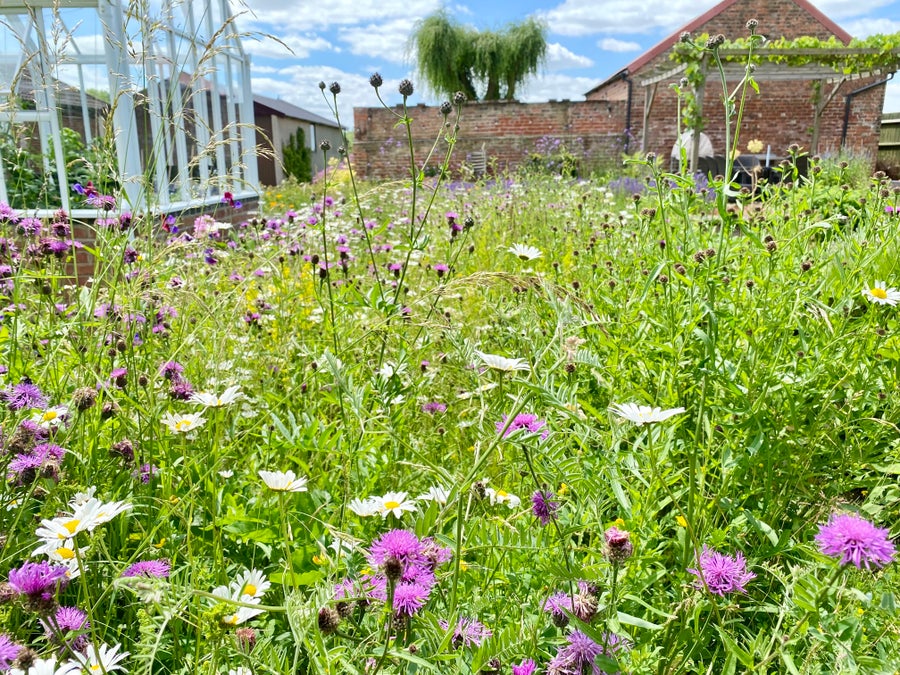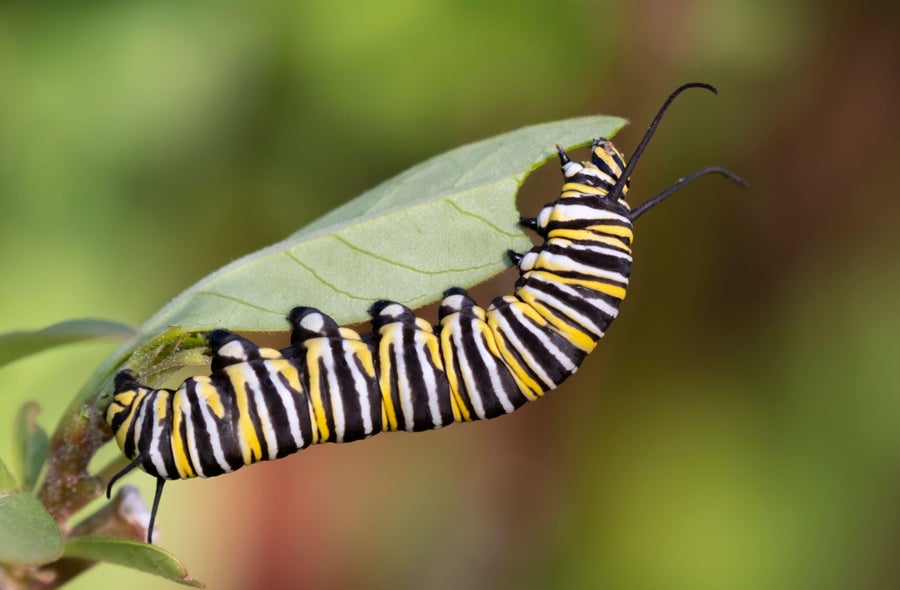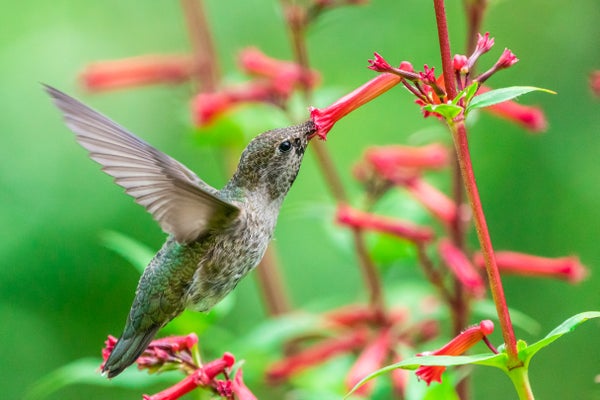Conservation may seem like something that scientists do to protect species that many people only ever see in zoos. But conservation can happen everywhere—such as in your backyard, where you play ball, drink coffee and host barbecues. Even apartment dwellers can make a difference.
“There’s nothing that’s too small to do,” says Matthew Shepherd, director of outreach and education at the Xerces Society for Invertebrate Conservation. “If we all do a small thing, combined, it becomes a lot.”
Here are eight approaches that are particularly valuable for conserving species where you live.
On supporting science journalism
If you're enjoying this article, consider supporting our award-winning journalism by subscribing. By purchasing a subscription you are helping to ensure the future of impactful stories about the discoveries and ideas shaping our world today.
Plant native plants
One of the most meaningful actions you can take for wildlife is to grow native plants at whatever scale is feasible for you. “It’s not like you have to suddenly rip apart your garden and clear it all out and bring new stuff in,” Shepherd says. “You can look at your garden—are there existing spaces where you could fit more plants in, and if so, what would be appropriate to grow there?”
Native plants are crucial because native animals have evolved in tandem with them and are adapted to eating their nectar, leaves, seeds or berries. Growing these plants—in particular, growing several of these plants together—attracts and supports the insects, birds and other species that rely on them, experts say.
“Native plants are important, but also [so is the] diversity of native plants,” says Jennifer Smith, a wildlife ecologist at the University of Texas at San Antonio. “Have a variety of plants that provide different types of resources. Maybe some provide berries; maybe some are more important as hosts for certain invertebrates.”
To find native plants in your area, you can check out resources such as the National Wildlife Federation’s native plant finder. Also, Shepherd’s Xerces Society, local native plant societies and small nurseries can all help you identify plants native to your area. You can also find great options for your garden by looking at nonnative plants that still provide valuable resources for wildlife, Shepherd notes; many suppliers will label pollinator-friendly plants, for example. And apartment-dwellers can take part, too, he says, because even small patches of native plants in containers can benefit local wildlife.

CaroleGomez/Getty Images
Shrink your lawn or mow it less often
One way to make space for native plants is to reduce the amount of lawn you maintain. According to a study published in Environmental Management in 2005, turf grasses cover nearly 2 percent of the surface area of the continental U.S.—more land than any other irrigated crop.
But Shepherd says that typical American lawns, which are dominated by turf species, don’t do much for wildlife. “Those areas, as they are, provide very little habitat. You’re not able to grow much in those areas; there’s not really much flowering,” he says. If you’re able to replace your lawn with a native wildflower meadow—or even just shrink it by converting some of it into a patch of native flowers—you’ll replace that green wasteland with a more lifegiving landscape.
If you’re not ready to let go of your lawn yet, you can consider instead decreasing how often you cut it. Leaving your lawn unmown for an extra week or two lets it grow longer—that’s habitat right there, Shepherd says—and it lets plants flower, which benefits insects.
Avoid harmful chemicals
Now that you’ve thought about what to grow, it’s important to consider how you grow it. In particular, that means reducing the use of chemicals that can harm animals that consume the plants.
“Pesticides are not good for wildlife, and in particular, insecticides are not good for insects,” Shepherd says. In addition to thinking about your own gardening practices, he notes that it’s valuable to ask your nursery whether the plants sold there were doused in insecticides as they were grown—you may be bringing these chemicals into your garden without realizing it.
If used carelessly, chemicals can also spread far beyond their application site and the animals they target, says Krysten Schuler, a wildlife disease ecologist at Cornell University. Her research has included monitoring rodenticide levels in weasel-like animals called fishers in remote mountain ecosystems. “We’re seeing that move up the ecological chain,” she says of chemicals used in and around homes. “It doesn’t really go away.”
Think about an animal’s full life cycle
Any animal’s needs will change as seasons cycle and it ages—and catering to these changing needs is a valuable contribution to backyard conservation. Try to consider how animals reproduce and, for both juvenile and adult individuals, what they eat and where they shelter. “If we’re not supporting the entire life cycle of the insects, then you’re only bringing partial benefits,” Shepherd says. For example, if you hope to attract butterflies, consider what their caterpillars eat, he says.
One general practice to this end is to keep fallen leaves in place rather than rake them away, perhaps tucking them along the back of a plant bed if aesthetics is a concern. “If we can keep leaves, not only can we help soil but also the leaves themselves help provide shelter—help provide habitat, food in some cases, for all sorts of insects,” Shepherd says. These leafy hideouts then attract hungry hunters such as fireflies and birds, he notes.
Although safety comes first, keeping trees intact where possible also supports local wildlife, Smith says. “Trees are very important, especially mature trees,” she says. Dead trees, called snags, when they aren’t hazardous, are particularly valuable nest sites for birds, she notes.

Monarch butterfly caterpillar eating a milkweed leaf.
Natalia Kuzmina/Alamy Stock Photo
Apply decals to unscreened windows
Windows—particularly large, unbroken panes without screens—are difficult for birds to see, leading to collisions that can be fatal to the animals. Films or decals applied to the exterior of the window can increase glass visibility and prevent bird strikes. In addition, reducing or blocking indoor lighting at night can reduce collisions during spring and fall migration.
Don’t feed animals in general, and use bird feeders carefully
Luring animals with food to your backyard can be tempting, but the practice can sometimes do more harm than good. “Wildlife are doing fine on their own, and people don’t need to feed them,” Schuler says. Food can end up supporting animals it wasn’t intended for, and it’s dangerous for people and animals alike when wildlife begin to associate humans with food. “We’d like the wildlife to maintain a healthy respect for people and keep their distance,” she says. (And don’t put out medicine-laced food in an attempt to treat sick animals, she notes—it could foster drug resistance and hurt pets.)
Despite their popularity, bird feeders aren’t necessarily exempt from these issues—evidence is mixed about whether these stations benefit birds broadly or just a handful of species. Schuler and Smith both note that careful placement is crucial: make sure a feeder is high enough that other species can’t access it and far enough away from a window that birds won’t crash into the glass.
And be sure to clean your feeder regularly, perhaps every couple of weeks, Schuler says, because the equipment can spread diseases caused by bacteria such as Salmonella and fungi.
Keep dogs vaccinated and cats indoors
You can also be a wildlife-friendly pet owner. For dogs, that means making sure Fido is up to date on vaccines to reduce any chance of passing infections to wild neighbors, Schuler says. For cats, that means keeping Felix indoors. A well-designed home environment keeps cats happy and safe from cars, predators and other outdoor threats—while also keeping birds, lizards, small mammals and a host of other critters alive.
Call wildlife control or a state wildlife agency if you need help or see something odd
You don’t have to handle everything independently that wildlife bring your way, Schuler says. If you have bats in your attic, for example, a local wildlife-control officer could help you plan how to get them out and patch up their entry points.
And while it may not be common to find a diseased wild animal, don’t hesitate to call your state agency if you see, for example, a skinny deer walking in circles or a pile of dead birds. These can be signs of a larger problem that needs to be addressed. “We want the public to let us know if they see something weird,” Schuler says.
